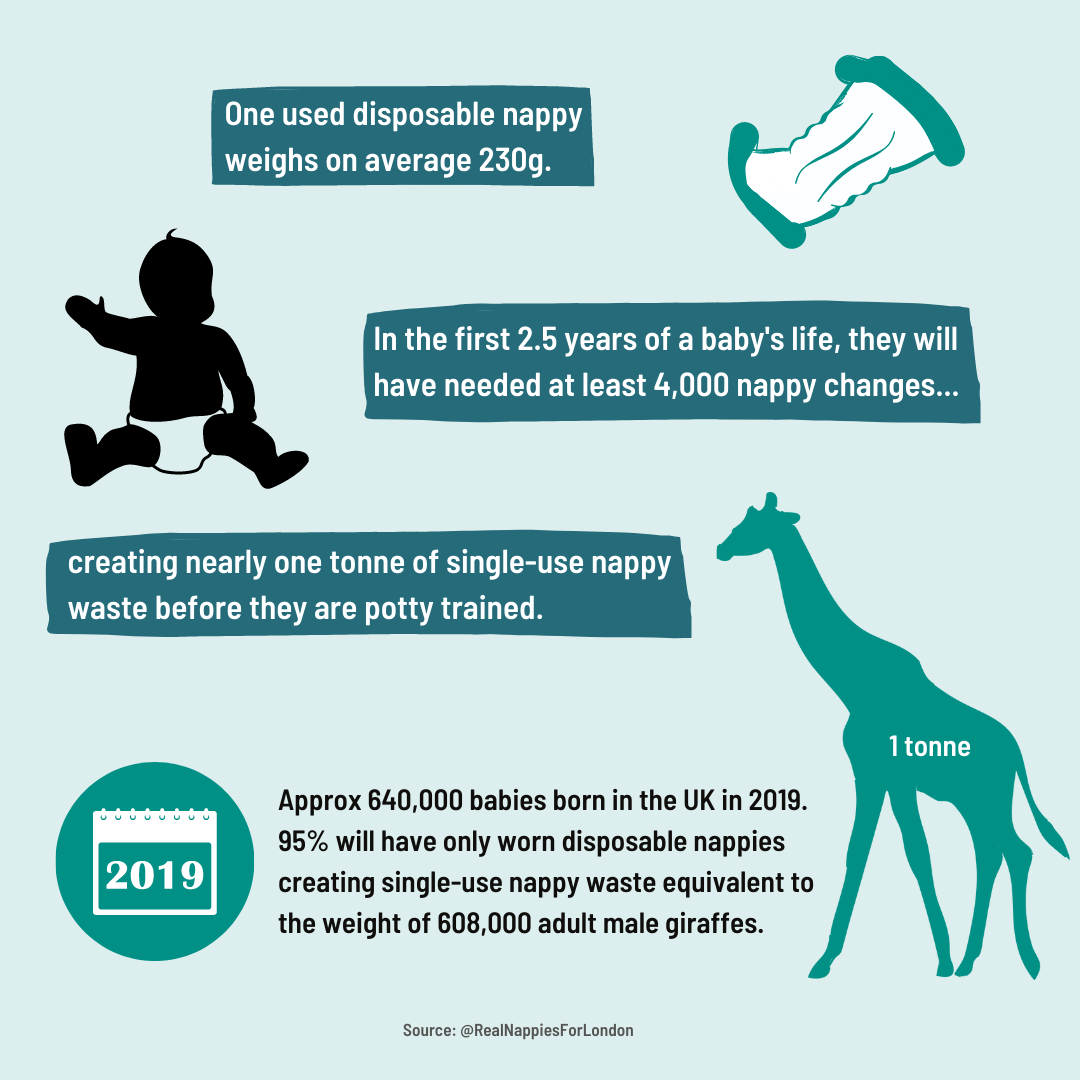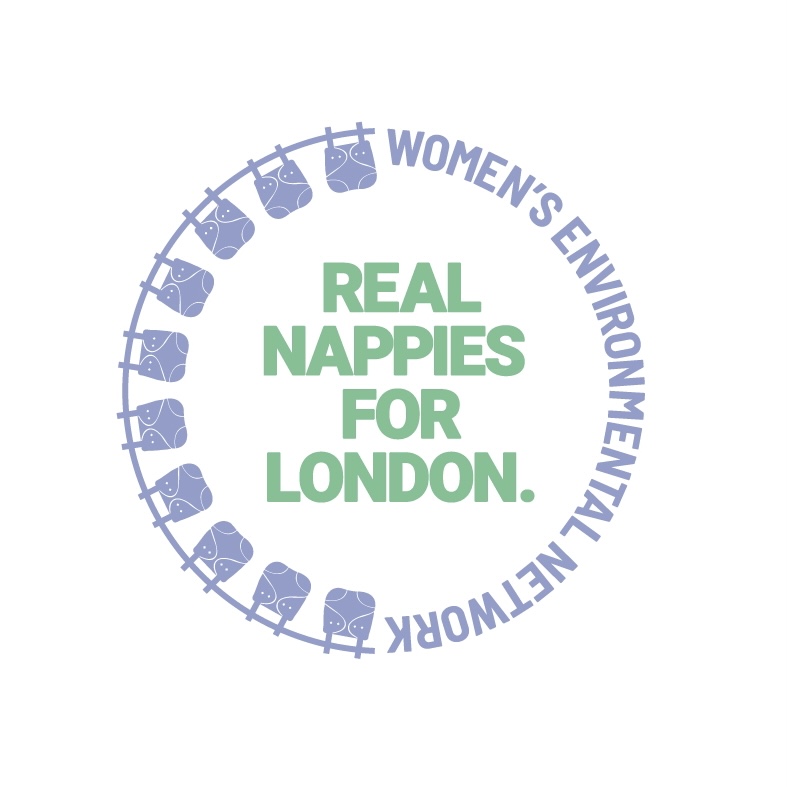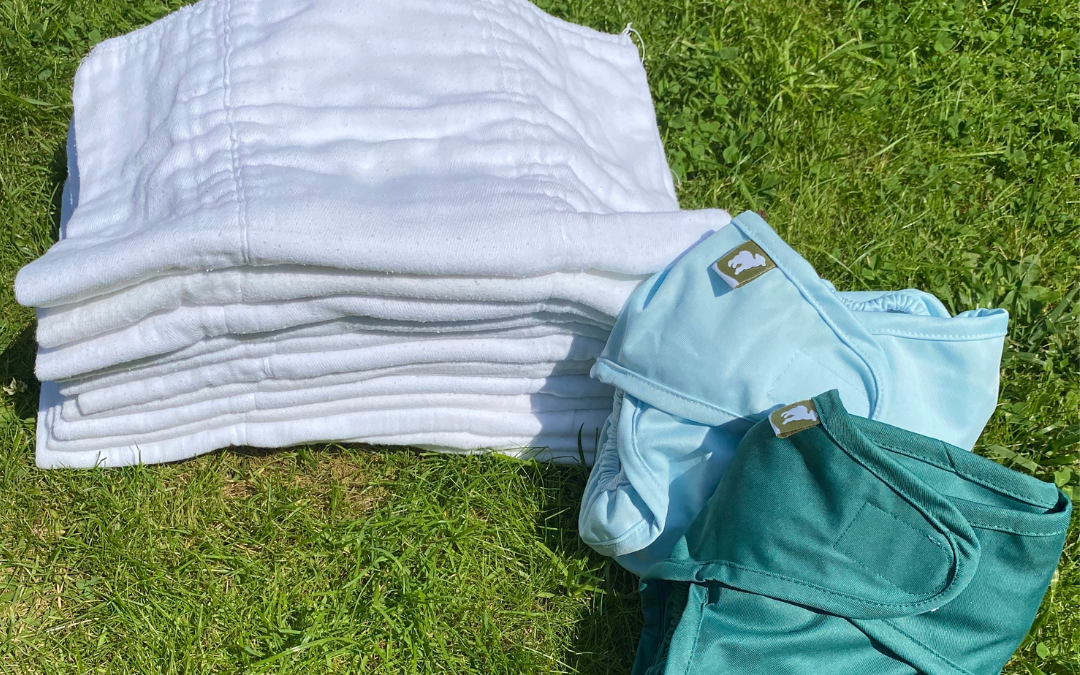July has crept up on us with friends gathering, football and school holidays, the sense of normality that I know many have missed. July is also a month that’s become known as Plastic Free July. During this month many people around the world reflect on their daily habits and challenge themselves to reduce their waste, and help slow down global warming. We are no different here at Real Nappies for London as we do our best in reducing our own waste and help parents reduce their babies waste with our reusable nappy voucher.
When looking at everything a baby needs for the first two and half years of their lives (and this is without all the extra stuff that might be handy or just pretty) it is astonishing to see how much waste, especially plastic, is accumulated around such a little human being. One of the necessities for a baby are nappies and this is where a baby’s bottom will start to create waste within the first few hours after being born.

From birth up until potty training age (average 2.5 years old [1]) a baby will require at least 4,000 nappy changes [2], let’s put this into proportion; on average, one used disposable nappy weighs 230g, times this by 4,000 and you’ll get 0.920 tonnes. Let’s even out that number and say that a baby will go through an estimated one tonne of disposable nappies, but what is a tonne? Unless you work in construction or fishing you might have a clear idea, but a quick online search will tell you that a grown male giraffe weighs on average one tonne [3]. This year many of the approx 640,000 babies born in 2019 within the UK [4] will start to show signs of being ready for potty training, 608,000 of these babies will have used disposable nappies whilst an estimate 5%, or 32,000 babies, will have used reusable nappies. This means that of the babies born in 2019, who have worn disposable nappies, they would have created the equivalent weight of single-use nappy waste as 608,000 fully grown male giraffes. That’s three times the capacity of Glastonbury Festival and six times the amount of giraffes left in the wild [5].
Adding to the equation, the average disposable nappy is made out of 61% plastic and many mixed materials (read more about it on our previous The Plastic Question blog post), which is equivalent to 17 plastic bags after a single day’s use of disposable nappies. Thus making single use nappy waste primarily plastic waste.
How can parents then help reduce this giraffe equivalent mass of waste? It’s simple, by swapping as many single-use, disposable, necessities as possible to reusable ones. This is not an ‘all or nothing’ option and certainly not a blog post about becoming a perfect zero-waste parent, it’s about realistic small changes gradually making big differences. I started with only one reusable nappy and when we used up the last of the disposable nappies, we chose to reuse by switching to reusables. By adding just one reusable nappy into your baby’s changing routine, you are preventing 730 disposable nappies [6] from going to you waste bin, ending up as energy from waste or worse, landfill.
Here are some simple suggested swaps and environmental conscious consuming that any parent/carer can try/do when preparing for a baby’s arrival or whilst raising a little one.
- Reusable nappies: buy brand new or pick up second hand (check out our Reusable Nappy Exchange Facebook Group). Alternatively you can hire reusable nappies via washable nappy laundry services or Cloth Nappy Libraries.
- Apply and redeem a Reusable Nappy Voucher: if you are a parent living in a voucher participating London Borough – Bexley, Camden, Enfield, Hackney, Haringey, Islington, Lambeth or Waltham Forest – you can apply for a free voucher worth up to £54.15 to redeem for reusable nappies or a trial laundry service.
- Reusable wet wipes: these can either be bought new or second hand, you can even make some out of an old towel.
- Reusable Wet bags: when changing out and about you might need a waterproof bag for a baby’s dirty nappies, reusable wet wipes or even just for swimming or dirty clothes. As great as it is to reuse plastic bags, it’s also better to avoid them, this is a great reusable replacement.
- Beaker/Bottle/Water bottles/crockery: buy second hand or be conscious of the material it’s made out of.
- Baby soaps/shampoo:a bar of soap for sensitive skin is fine to use for both body and hair and they last so much longer than what’s in the bottle (unless a specific soap has been advised by a doctor).
- Clothes:buy second-hand, hire or attend baby clothes swaps, your savings account will love you.
- Prams/wraps/slings:pick up second-hand or rent them! These are manufactured to be used by many babies and not just the one.
- Furnishing: cots, bassinet, changing tables, baby bath and everything you can think of… get it second-hand (with the exception of car seat and mattress). Again, this is made to be used by more than just 1 or even 2 children (my parents have a 33-year-old cot that we use for our sone when visiting).
- Baby food: those pre-cooked meals are super handy but not great to recycle. If you have the freezer space then prep some of the weaning food and store in your freezer, you can use one of your many ice-cube trays (I always see them in charity shops) and either wrap in foil or baking parchment when freezing.
Reducing your baby’s waste is something that won’t happen overnight nor by your next bin collection day, but with time, patience and research you will notice the difference to not only your waste bin and wallet, but you’ll feel good too!
_
References
[1] NHS
[4] ONS
[5] Giraffe Conservation Foundation

